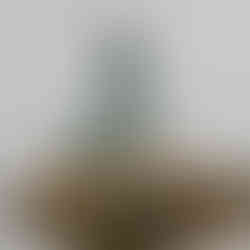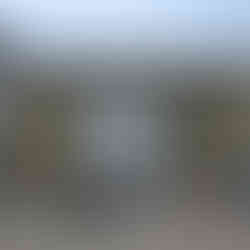Creative Copenhagen
- Nancy Sedgwick
- Sep 2
- 5 min read
Tuesday - September 2, 2025
Copenhagen, Denmark

Fun Facts: Copenhagen
Happy City: Copenhagen consistently ranks as one of the happiest cities in the world. Our guide today said she thinks content is a better description than happy. People feel safe and secure, and things are predictable.
Copenhagen is the capital of Denmark.
Tivoli Gardens: (1843) One of the world's oldest amusement parks; it inspired Walt Disney's Disneyland.
Strøget: The longest pedestrian shopping street in the world, offering diverse shops.
The Little Mermaid statue has been decapitated twice. It was installed in 1913. She was sculpted by Edvard Eriksen and commissioned by Carl Jacobsen of Carlsberg Breweries and inspired by the Hans Christian Andersen fairy tale.
Freetown Christiania: A unique, self-governing community within Copenhagen with its own rules and culture.
Royal Connections: The Royal Family still resides in Copenhagen at Amalienborg Palace.
Today we took a walking tour of Copenhagen. The city is very flat, and there are no mountains nearby. This topography makes it a great walking and bicycling area; however, there are still some cobblestone streets which can make things a little more challenging.
Over the last few days we have been learning a lot about the history of the places we have been visiting, and sharing some of that with you. Today we will look at a few different areas - art, architecture, sustainability and birds.
Art in Copenhagen
Because we were on a walking tour we didn't get to stop at any art galleries, but we did see many examples of creative public art.
The statue on the left is the Little Mermaid by Edvard Eriksen, based on the story by Hans Christian Andersen, and completed in 1913. The life-size statue depicts the 15 year-old mermaid as she transitions to human form. The statue on the right is from a 1970s art installment in another part of the city showing an alternative result from the unusual transformation.
Interpretive and creative art on public display - the one on the left is by the same artist who designed the alternative mermaid sculpture; the one on the right was sitting on a bench by the harbor.

A more typical public statue from this area: the Gefion Fountain depicts oxen and a norse goddess. It was created in 1908.
Examples of Architecture:
On the left is a Russian Church, and on the right are original brick buildings by the harbor.
Two pictures of the Royal Palace, which consists of four separate homes, one for the reigning monarch and others for members of the Royal Family and visiting heads of state. Two of the homes are connected by an impressive gate, which was actually built to provide a "hidden" hallway for the monarch to get from their house to the house where royal business is conducted. The hallway is in the lighter color area above the columns. Before it existed protocol would say that when a monarch left the residence, it must be in a royal vehicle; so, the monarch used to get in the car, drive a couple hundred yards, and walk into the other building,

Guarding the palace:
The Copenhagen Opera House:

The Marble Church that isn't marble - this church was planned to be made totally out of marble, but once construction started (with the big gold-lettered name plate), the builders discovered they couldn't afford a marble church. Some well-to-do residents and companies donated enough for the first floor to be done in marble, but further up the church is built from limestone.

The Resistance Museum:

The Museum of Danish Resistance tells the story of the Danish resistance during the German occupation in 1940-1945.
The museum looks small from the outside, but that is because most of it is underground. Appropriate. (think about it!)
Nyboder Historical Residential Area:

In the late 1700's, Denmark needed to build their Navy which required hiring more personnel. So they came up with a creative approach to attract more young men. These Naval Barracks were built with a lot of very small apartments that were free for members of the Navy and their families. The idea paid off and a lot of young men took advantage of the free housing. The neighborhood expanded and the situation grew to have an added bonus - military families had a built-in support system. Slightly larger officer quarters were also built. The orange color came from a chemical that was applied to the outside of the building to protect them from the moisture that is common to the area. Many of these apartments are still being used,
Sustainability
Like many other countries in this area, there is a commitment to protecting the environment and leaving a minimal footprint on the area. Houses are typically small, there are fewer cars per capita, and waste reduction is a way of life. The commonly heard saying is - We want to save this country for our children.
Here in Copenhagen they came up with a very creative idea to solve two local problems at once. They needed a clean way to get rid of the waste they couldn't recycle, and people wanted a place to ski (remember there are no mountains - or even high hills). So, they built the Amager Bakke in 2018. Inside this building, waste materials are burned in an environmentally friendly way, while the top of the building is a ski slope and hiking trail! And it works! People are skiing there, with or without snow, and the waste reduction plant is working so well that other countries are sending their waste to the facility. Upgrades are in the works to lower the carbon content in the steam/smoke that is released, but a promised funding source is backing out, so that may take a bit longer to happen.

Windmill Farms: This is what we saw sailing into the Copenhagen harbor today. And we saw more windmills in other places, both on land and in the water. This part of the world has made a significant investment in alternative sources of energy and carbon-free emissions.

And We Saw Birds!




That's all for today! We are still in search for the Danish danish! But there's hope....tomorrow we are on our "Taste of Alborg (Denmark) by Foot" excursion and we anticipate positive results.




















Loved the narrative and supporting photos. Poor mermaid. How sad they keep decapitating her .
I love your smiles and I love this post. The amagur bakke might be one of the most inventive things I’ve ever heard of! Enjoy the food tomorrow!
I was in Copenhagen in 1961 and again in 1975 with Nancy...A great city! You included great photos as usual!
Copenhagen is one of my faves. Glad to enjoyed it. I wish you luck on your hunt for the Danish danish.